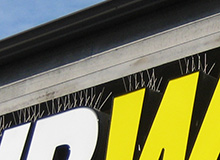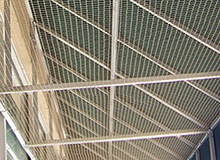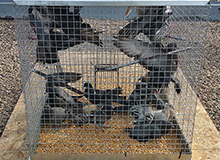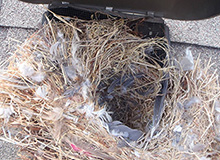Pro Bird Control New York City, New York
Call us now at 347-650-2664 for professional bird control services in New York City, NY.

347-650-2664 - Call 24/7
We work 7 days a week - go ahead and call evenings and weekends!
Licensed & Insured
We carry liability insurance and all New York licenses.
Professional Service
Treating both birds and customers with courtesy and respect.
Featured Bird Control Services
We are a professional bird control company servicing New York City, NY. We solve problems with birds afflicting residential and commercial properties. We handle birds such as pigeons, sparrows, starlings, grackles, Canada Geese, and more. We most commonly receive calls about birds roosting on or even in buildings and ledges, leaving their feces behind. We not only remove birds, but we provide a wide array of services, from bird damage repairs, bird prevention services, bird dropping cleaning, and more. We are fully licensed and insured in New York, and we answer our phones 24/7. Call us now at 347-650-2664 for a free price quote and to schedule a same-day or next day appointment for bird control.
About Our Company

Services We Offer
- Bird Trapping
- Bird Prevention
- Droppings Cleanup
Best service in New York City
- Superior bird control from roof to ground, start to finish.
- Available 24/7 with weekend and same-day appointments
- Humane treatment of birds and professional service for you.
Client Testimonials
-
Thank you for coming to my home on a Sunday to get the falcon in my garage - I almost had a heart attack before you showed up!
-
Pro Bird Cotrol NYC solved a problem with pigeons our building, after two other New York companies failed - and at a price lower than the others! Thank you!
-
My regular pest control company couldn't handle my bird problem - these guys bird-proofed my warehouse in a week! I've been bird-free ever since!
Pro Bird Cotrol NYC Tip of the Month:
All About New York City Birds Nesting in Attics
Although New York birds prefer to make their homes in trees, rock ledges, bushes, and hollow trunks, many have been forced out of their natural habitats by civilization encroaching on their homes. These birds have had to adapt and find other safe and secure places to build a nest and raise their young. In cases where birds find themselves in an urban or suburban setting they will look to your attic as a safe harbor. It is dry, can be guarded from predators, and is most likely close to a source of food and water. If you find birds in your attic or buildings, they are most likely female. Female birds come into your home in the early spring and summer looking for a suitable place to build a nest and have their babies.
In a number of bird species, both the male and female bird builds the nest and helps raise the young. Depending on the type of bird, they will lay one to three eggs at a time. On average, the hatchlings are unable to fly for several months, and cannot leave the nest until they are able to fly. Until then, they will require constant care from the parent bird(s). During that time, the hatchlings are left in the nest while the parent(s) go out and get food.
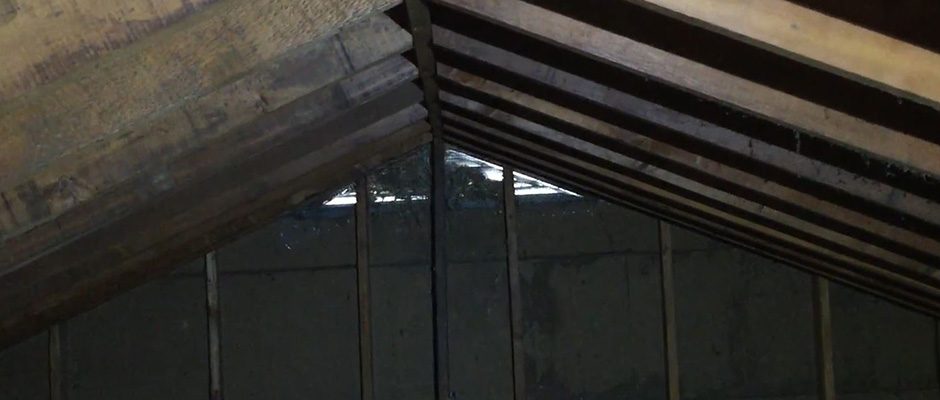
The dates for birds to give birth vary slightly according to the type of bird, but usually occur throughout the spring and summer. Most species of bird lay eggs between mid-April to late July. By the end June, all of the hatchlings born in the spring should be able to fly, and leave the nest in search of their own homes. Birds born in July should be gone by September. If you intend to eradicate the birds, and destroy their nests and young, check your local laws first. Some Birds are a protected because of the benefits they provide by eating insects and other pests, or because they are considered an endangered species. . If you decide to get rid of the adult birds, by either trapping or killing them, understand that the babies confined to the nests are going to starve to death. This is not only extremely cruel; it leaves you with nests of dead birds in your attic.
If you simply close up the New York City bird’s entry ways, this can cause another problem. Mother birds, as almost all mothers, will be frantic to get to her young. If you have sealed off all entrances to the attic, in an attempt to be rid of the birds, she might search for another way into your home. A desperate bird will come in through open doors and windows in the living or working areas of your home trying to reach their young. No one wants a frightened and desperate mother bird rushing in through your open door or window and thrashing about your house desperately searching for their babies. If the parent bird is cut off from their young, Starving babies will try to crawl in search of food. They will screech and scream as they call for their parents.
Because they are tiny, they can fit through cracks and into small spaces where they get stuck and die. You could end up with a batch of dead animals in the walls and crawlspaces of your home. That is not only a horrible fate for the hatchlings, but it will cause an awful stench throughout your house. The carcasses can harbor diseases that can harm you or your pets. Infestations of bugs and other carrion feeders will come to feast on the rotting carcasses. Now you have a huge pest infestation that will be dangerous and costly to cure
Although you may not like it, the best solution is to wait for the hatchlings and their parents to leave on their own. Once they leave, you can prevent their return by bird-proofing your home. Keeping your home bird free is best achieved by proper methods of prevention. Make sure that your home is free of cracks and crevices that allow birds’ entry to your attic. Put up screens and bird block around eaves, chimneys, and vents. Just because you don’t want them in your attic, does not mean that you cannot benefit from their presence in your yard. Birds eat many different bugs and pests. They can also be fun to watch.
Placing New York City bird houses or planting trees around your yard will give birds another housing option, and allow them to live in harmony with man. Be sure to check your attic space regularly to make sure it is clear of unwanted guests. Investigate immediately if you hear unusual sounds in your attic, or if you notice a lot of bird traffic flying to and from you roof area on a regular basis. These can be signs that birds are planning on taking up residence in your attic. Paying attention to these simple warning signs can allow you to stop the birds before they take up residence and become a real problem.
Is it Safe to Relocate a New York City Pigeon?
Will Bird Netting Keep New York City Pigeons Away?
Is it Legal to Trap New York City Piegons in Cages?

